
Roots
The quiet rustle of leaves, the deep resonance of a drumbeat, the stories carried on the wind—these sensations often speak of origin, of where we begin. For textured hair, especially that of Black and mixed-race individuals, its story begins not with a styling product or a salon chair, but in the very soil of ancestry, in the ancient wisdom passed through generations. To ask whether natural hair style restrictions in schools infringe upon cultural rights is to inquire about more than mere aesthetics; it is to question the sanctity of self, the freedom to embody heritage, and the right to educational access without penalty for one’s authentic being. Roothea approaches this conversation not as a legal brief, but as a gentle, yet firm, exploration into the profound connection between hair, identity, and the enduring human spirit.
Understanding the foundational aspects of textured hair provides a lens through which to view these school policies. Hair, at its core, is a protein filament, primarily composed of keratin. The differences we observe in curl patterns, density, and strand thickness across various populations stem from the unique shape of the hair follicle and the distribution of disulfide bonds within the keratin proteins.
Follicles that are more elliptical or hook-shaped tend to produce curlier strands, while rounder follicles yield straighter hair. This anatomical distinction is not random; it speaks to ancient adaptations, such as providing natural sun protection for early hominids in intensely warm climates.
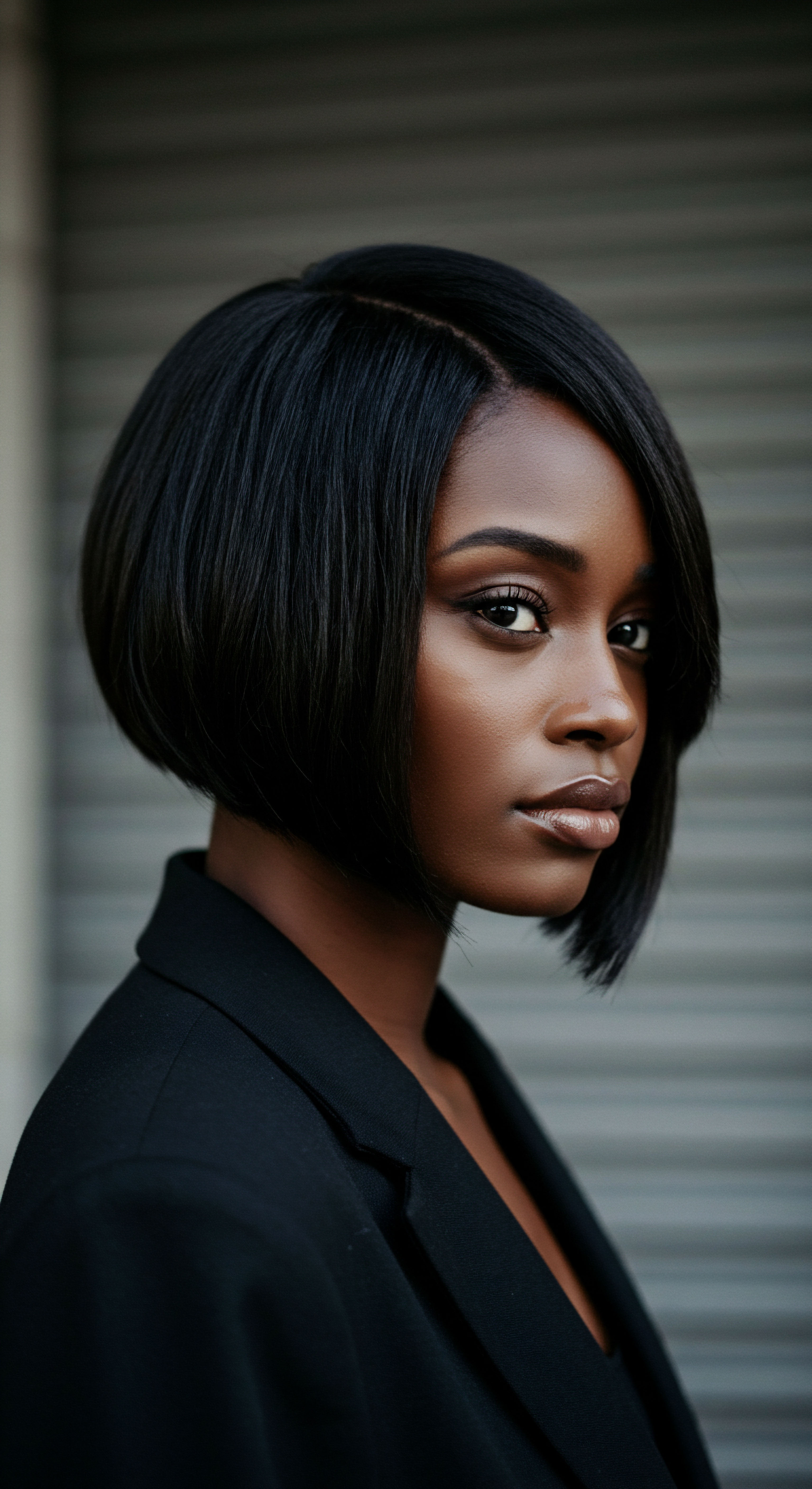
Anatomy and Physiology of Textured Hair
The distinct characteristics of textured hair are rooted in its biological structure. Unlike straight hair, which typically grows from a round follicle, curly and coily hair emerges from follicles that are oval or even ribbon-like in cross-section. This unique follicular shape dictates the curl pattern, causing the hair shaft to bend and spiral as it grows. The more flattened the oval, the tighter the curl.
This curvature means that natural oils produced by the scalp, known as sebum, travel down the hair shaft with greater difficulty, often leading to increased dryness compared to straighter hair types. This inherent dryness necessitates specific care practices, such as regular moisturizing and protective styling, to maintain its health and vitality.
Beyond the follicle shape, the internal arrangement of keratin proteins and their disulfide bonds also plays a significant role. Afro-textured hair often possesses a higher density of these bonds, contributing to its distinctive structure and resilience. These bonds, while providing strength, also influence how the hair responds to manipulation and environmental factors.
The outer layer of the hair, the cuticle, with its overlapping scales, may also lie less flat in highly textured hair, contributing to its characteristic volume and sometimes to its tendency to frizz. These are not flaws, but rather intrinsic qualities that define the beauty and versatility of textured hair.
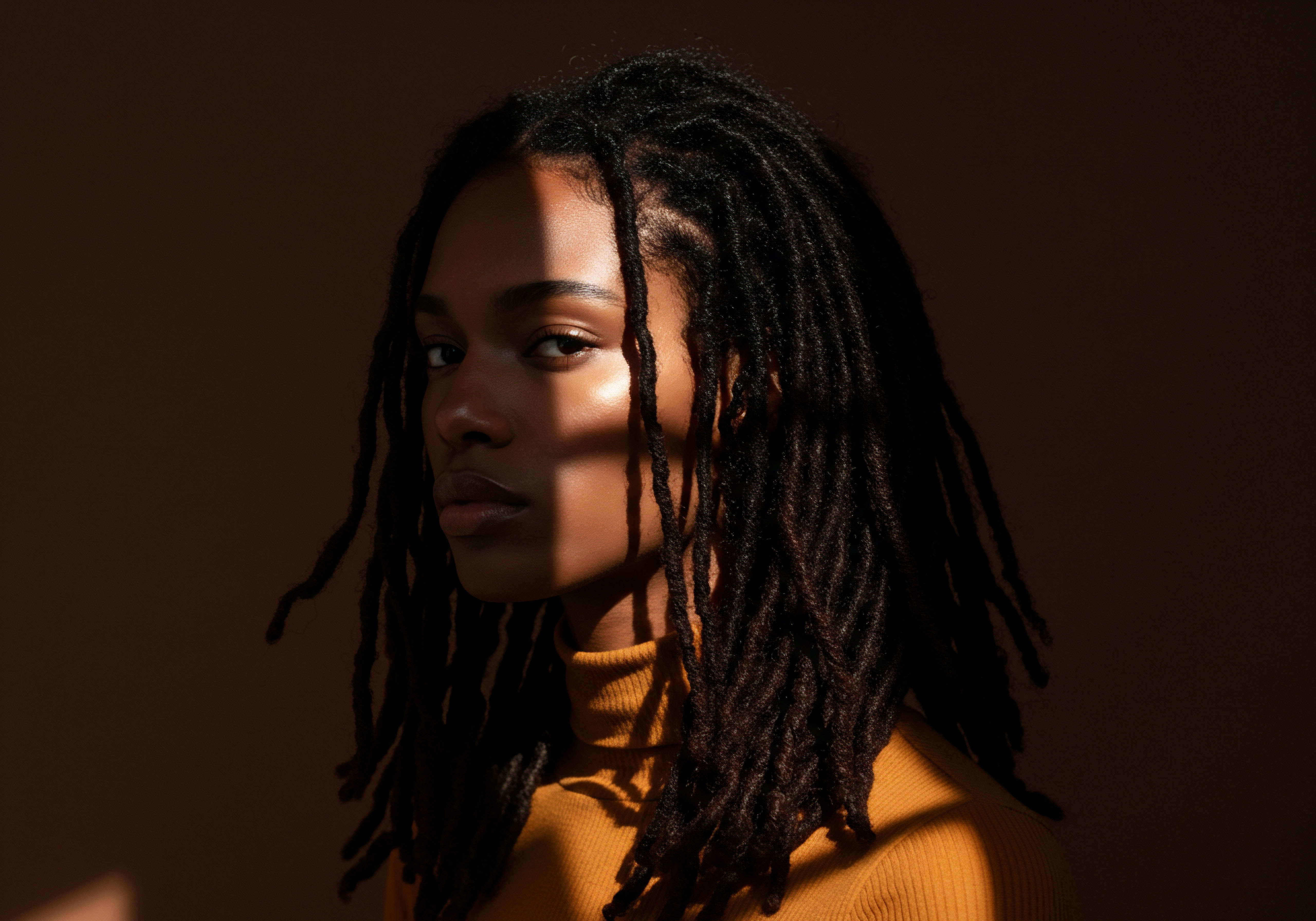
Textured Hair Classification Systems
For many years, discussions around hair texture relied on broad, often imprecise categories. However, more refined classification systems have emerged to describe the diverse range of curls, coils, and waves. While some systems attempt to categorize hair into types based on curl pattern (e.g. 3A, 4C), it is vital to remember that these are descriptive tools, not rigid boxes.
A single head of hair might display multiple curl patterns, and individuals often possess a blend of textures. The value in such classifications lies in guiding care and styling choices, allowing for a more personalized approach to hair health.
Hair’s intrinsic structure, from its follicle shape to protein bonds, shapes its natural texture, a biological reality often misunderstood in societal standards.
A more scientific approach seeks to define hair types based on measurable physical features, rather than relying solely on ethnicity. Researchers analyze factors like curve diameter, curl index, and the number of waves to objectively categorize hair. This approach acknowledges the vast human biological diversity and aims to move beyond debatable ethnicity-based classifications, providing a more precise language for hair characteristics.

The Essential Lexicon of Textured Hair
To truly understand textured hair, one must speak its language. The terms used are not merely descriptive; they carry cultural weight and history.
- Locs ❉ Often referred to as dreadlocks, these are rope-like strands formed by hair that has been coiled or braided and allowed to naturally matt. They hold deep spiritual and cultural significance in many communities, symbolizing connection to ancestry, identity, and a rejection of Eurocentric beauty norms.
- Braids ❉ This broad category includes various styles where three or more strands of hair are interlaced. Styles like cornrows (braids that lie flat against the scalp) and box braids (individual braids created using square or box-shaped partings) are ancient African traditions, serving functional purposes such as scalp protection and communication of social status.
- Afros ❉ A rounded, voluminous hairstyle where hair is allowed to grow out from the scalp in its natural kinky or curly state. The afro became a powerful symbol of Black pride and political resistance during the Civil Rights and Black Power movements of the 1960s and 70s.
- Twists ❉ A styling technique where two strands of hair are wrapped around each other, either flat to the scalp or as individual two-strand twists. This method helps define curl patterns and protects the hair.
These terms represent more than styling choices; they are markers of cultural heritage, personal expression, and often, a stance against historical pressures to conform to a singular beauty ideal.
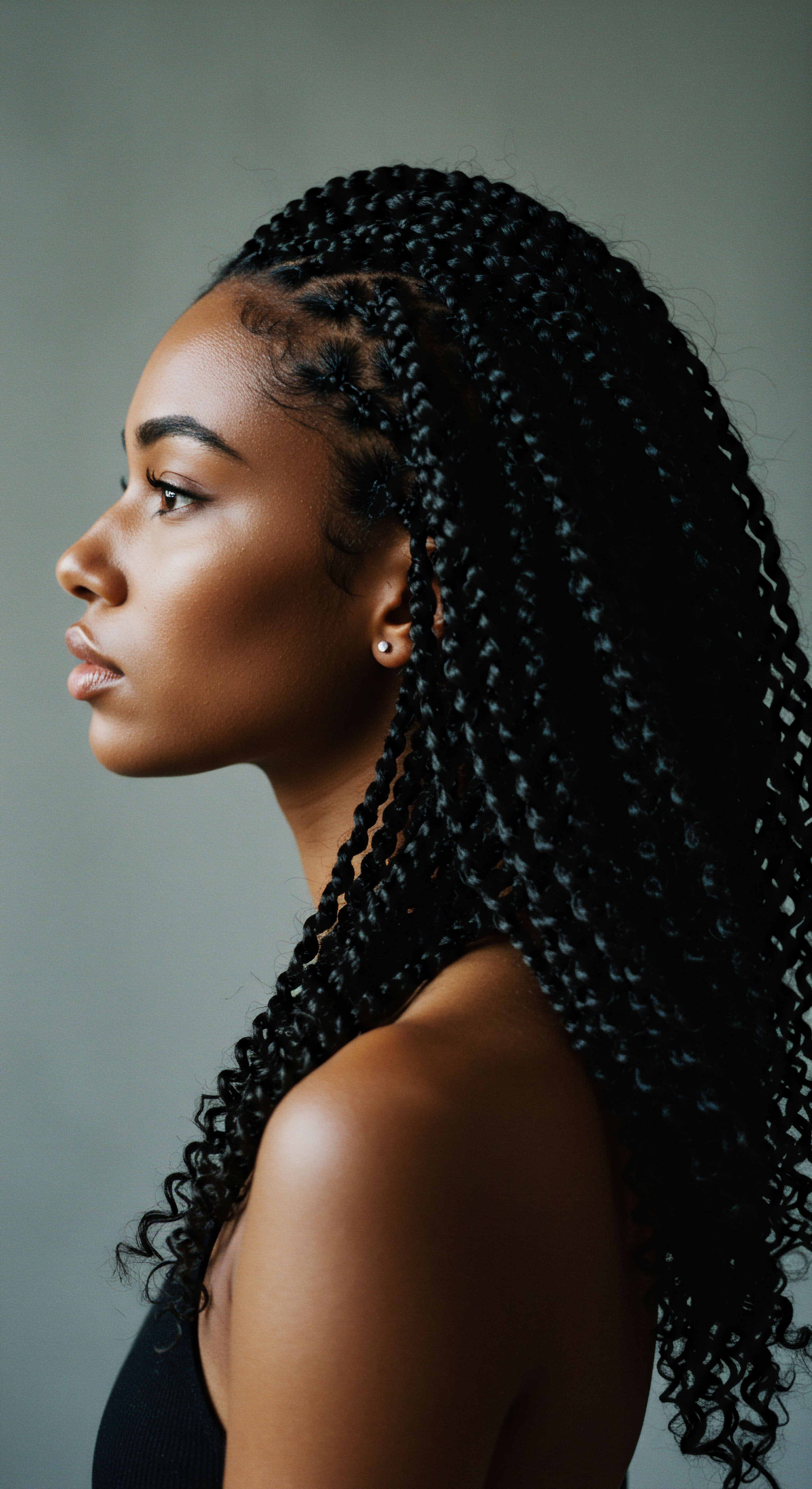
Hair Growth Cycles and Influencing Factors
Hair growth follows a cyclical pattern, consisting of three main phases ❉ anagen (growth), catagen (transition), and telogen (resting). While these cycles are universal, various factors can influence hair health and appearance, particularly for textured hair. Genetics play a significant role in determining hair texture and thickness. Hormones, certain medications, and chemical treatments can also alter hair characteristics.
Age brings changes too. Environmental factors, such as humidity and product use, further impact how textured hair behaves and looks. Understanding these influences helps in creating a supportive environment for hair, allowing it to flourish naturally.
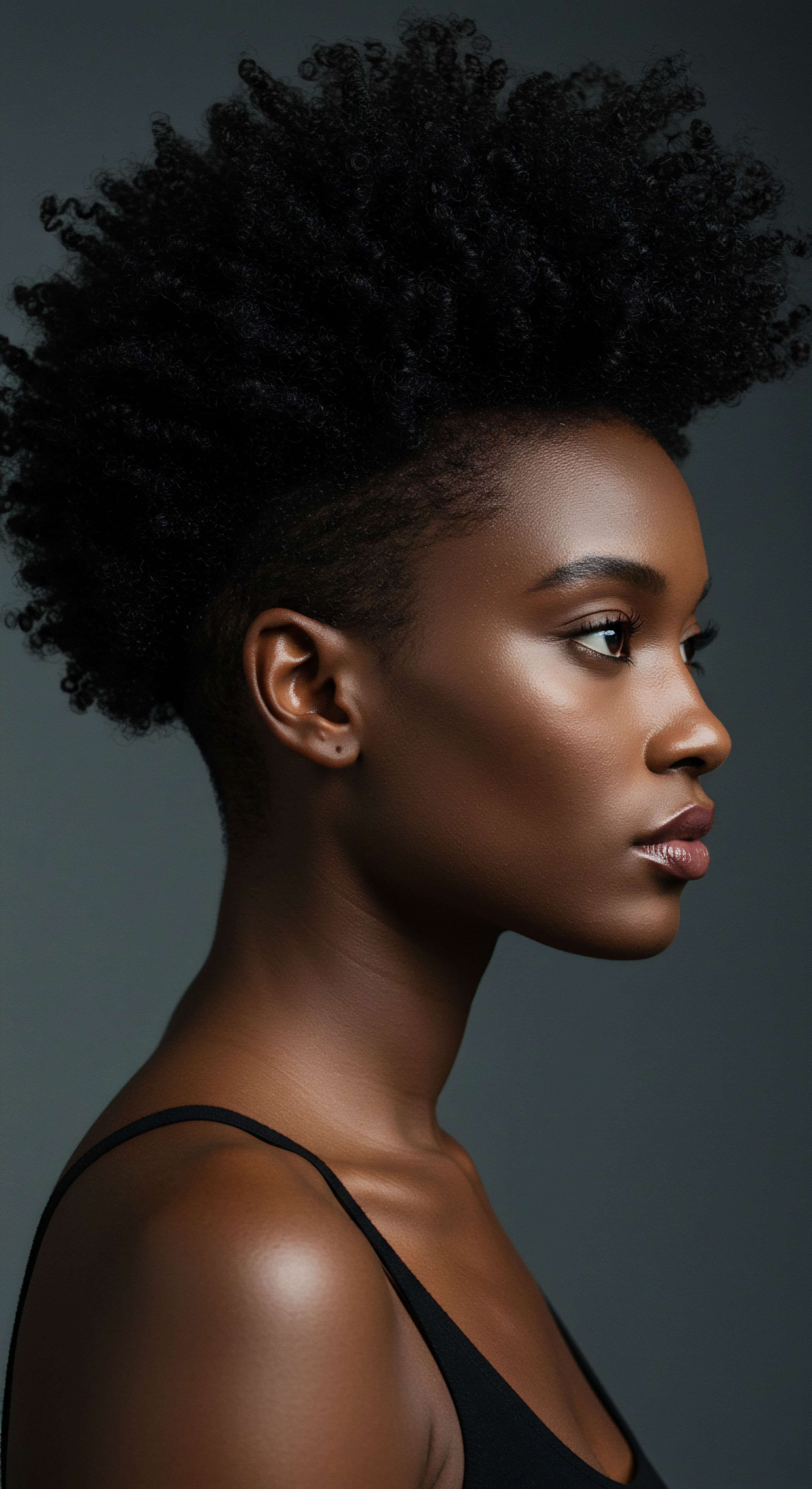
Ritual
Every morning, the quiet moment spent tending to one’s hair can be a ritual, a connection to self, and a silent affirmation of identity. For those with textured hair, these moments often extend beyond simple grooming; they are acts of care, preservation, and a continuation of ancestral practices. When school policies restrict natural hairstyles, they intrude upon this intimate space, challenging not just an outward appearance, but the very rhythms of self-care and cultural connection. Roothea considers this intersection of personal practice and institutional rule, asking what happens when the freedom to care for one’s hair, in ways that honor its unique nature and cultural significance, is met with resistance within the very spaces meant for growth and learning.
The art and science of textured hair styling is a testament to its versatility and beauty. From intricate protective styles that shield delicate strands to techniques that enhance natural curl patterns, each method serves a purpose, often rooted in generations of wisdom.
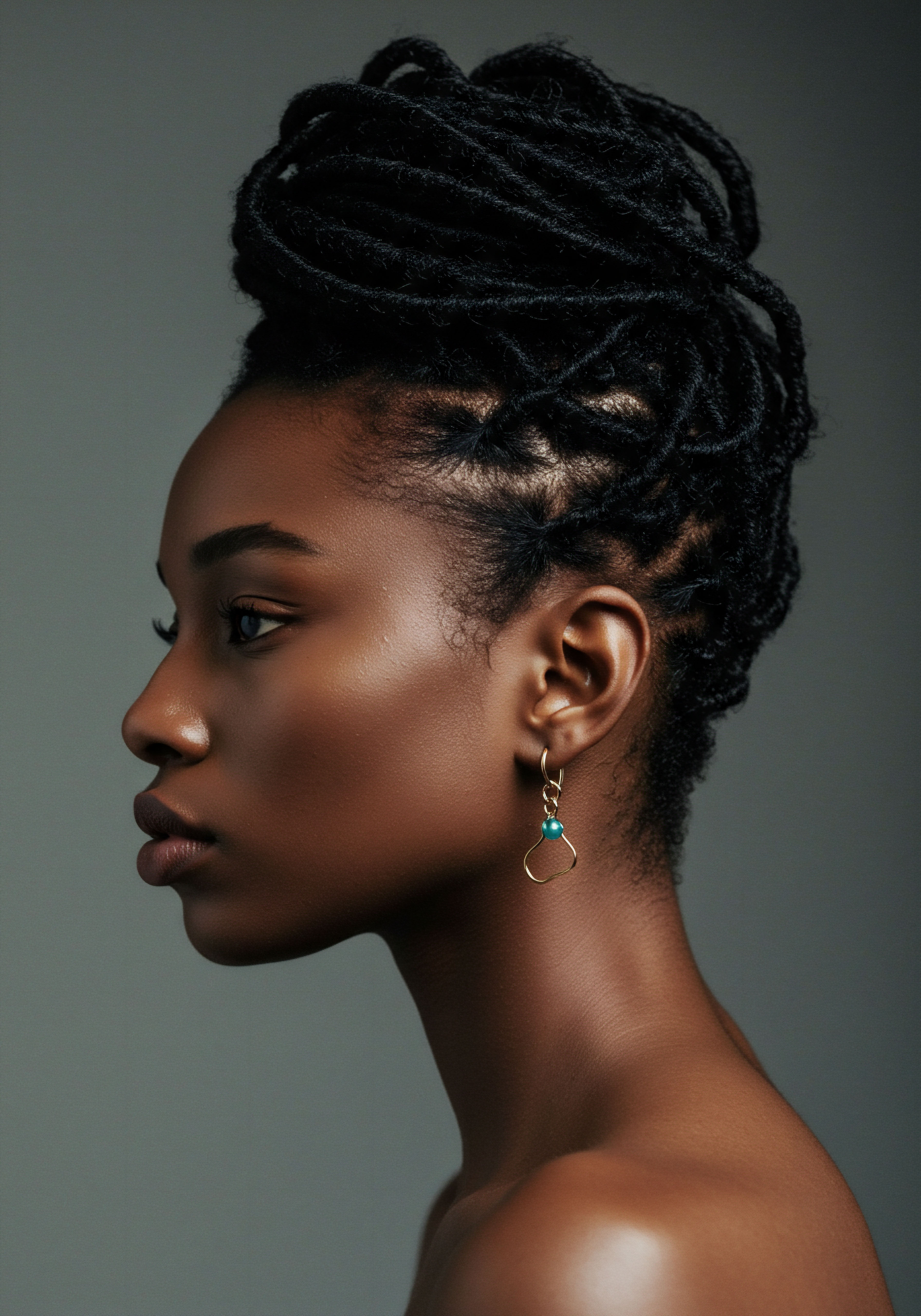
Protective Styling Encyclopedia
Protective styles are more than just aesthetic choices; they are a fundamental component of textured hair care, safeguarding the hair from environmental damage, reducing manipulation, and promoting length retention. These styles tuck away the hair ends, which are the oldest and most fragile parts of the hair shaft, minimizing breakage.
- Braids ❉ Whether box braids, cornrows, or micro braids, these styles keep hair neatly contained, reducing tangling and friction. They allow for minimal daily handling, providing a respite for the hair and scalp. Historically, braids also served as social markers, indicating tribal affiliation, marital status, or age in various African societies.
- Twists ❉ Two-strand twists, flat twists, and Senegalese twists offer similar protective benefits to braids. They are gentle on the hair and can be a good option for those seeking less tension on their scalp.
- Bantu Knots ❉ These are small, coiled buns secured against the scalp. While a style in themselves, they are also used to set hair for a defined curl pattern when unraveled.
- Wigs and Hair Extensions ❉ These offer versatility and protection, allowing individuals to experiment with different looks while their natural hair rests underneath. Proper installation and maintenance are vital to avoid tension and damage to the natural strands.
The practice of protective styling speaks to a deep understanding of textured hair’s unique needs. When school policies prohibit these styles, they disrupt essential care regimens, potentially leading to hair damage and forcing students to choose between hair health and compliance.

Natural Styling and Definition Techniques
Beyond protective styles, many individuals choose to wear their hair in its natural state, emphasizing its inherent texture. Achieving definition and managing volume requires specific techniques and a knowledge of hair’s response to products and manipulation.
- Wash-And-Go ❉ This method involves cleansing, conditioning, and then applying styling products to wet hair to encourage and define natural curl patterns, allowing the hair to air dry or diffuse. The goal is to let the hair’s natural form shine.
- Twist-Outs and Braid-Outs ❉ These popular techniques involve styling damp hair in twists or braids, allowing them to dry, and then carefully unraveling them to reveal stretched, defined waves or curls. This offers a balance between natural texture and a more uniform appearance.
- Shingling ❉ A technique where a small amount of product is applied to tiny sections of wet hair, and each curl is individually smoothed and defined. This method can offer maximum definition and minimal frizz.
These methods are not simply about vanity; they are about understanding and celebrating the distinct qualities of textured hair, allowing individuals to present themselves authentically.

Wigs and Hair Extensions Mastery
Wigs and extensions serve a dual purpose for many with textured hair ❉ they offer stylistic versatility and act as significant protective measures. The ability to change one’s appearance without altering the natural hair underneath provides a sense of freedom and experimentation. From elaborate braided wigs to subtle extensions that add length or volume, these tools allow for diverse self-presentation while shielding the hair from daily manipulation, environmental stressors, and sometimes, the very scrutiny of restrictive school policies. Mastery in this area involves not only selecting quality pieces but also understanding proper installation techniques that prevent tension on the scalp and natural hair, along with consistent cleaning and conditioning of both the added hair and the scalp beneath.

Heat Styling and Thermal Reconditioning
The application of heat to textured hair, through methods like blow-drying, flat-ironing, or thermal reconditioning (chemical processes that permanently straighten hair), can alter its natural curl pattern. While offering a temporary or permanent change in appearance, these methods demand a safety-first approach. High temperatures can cause irreversible damage to the hair’s protein structure, leading to dryness, breakage, and loss of elasticity.
When schools impose restrictions that implicitly or explicitly pressure students to straighten their hair, they may inadvertently encourage practices that compromise hair health. The use of heat protectants, lower temperatures, and minimizing frequency are paramount for anyone choosing to alter their hair with heat.
Hair care rituals, deeply personal and culturally significant, are often undermined by school restrictions, forcing students to choose between authentic expression and compliance.
A student who feels compelled to straighten their hair to avoid disciplinary action or negative perceptions may expose their hair to damage. This creates a difficult choice, placing undue stress on young individuals who are already navigating their identities. The goal should be to support healthy hair practices, not to impose a singular aesthetic that may be detrimental.

The Complete Textured Hair Toolkit
Effective textured hair care relies on a specific set of tools and products designed to cater to its unique needs.
- Wide-Tooth Combs and Detangling Brushes ❉ These are essential for gently working through curls and coils, minimizing breakage during the detangling process, ideally on wet or damp hair with conditioner.
- Moisturizing Conditioners and Leave-Ins ❉ Given the natural dryness of textured hair, products rich in humectants and emollients are vital for hydration and softness.
- Satin or Silk Scarves and Bonnets ❉ These accessories protect hair at night by reducing friction against pillows, preserving moisture, and preventing tangles and frizz. They are a practical necessity for maintaining styled hair and promoting hair health.
- Hair Oils and Butters ❉ Used to seal in moisture and provide shine, these products offer additional protection and nourishment.
The items in this toolkit are not merely accessories; they are components of a regimen designed to maintain the integrity and beauty of textured hair. When school policies indirectly or directly discourage styles that necessitate such tools or practices, they disrupt a holistic approach to hair care, often leading to discomfort or unhealthy hair conditions.
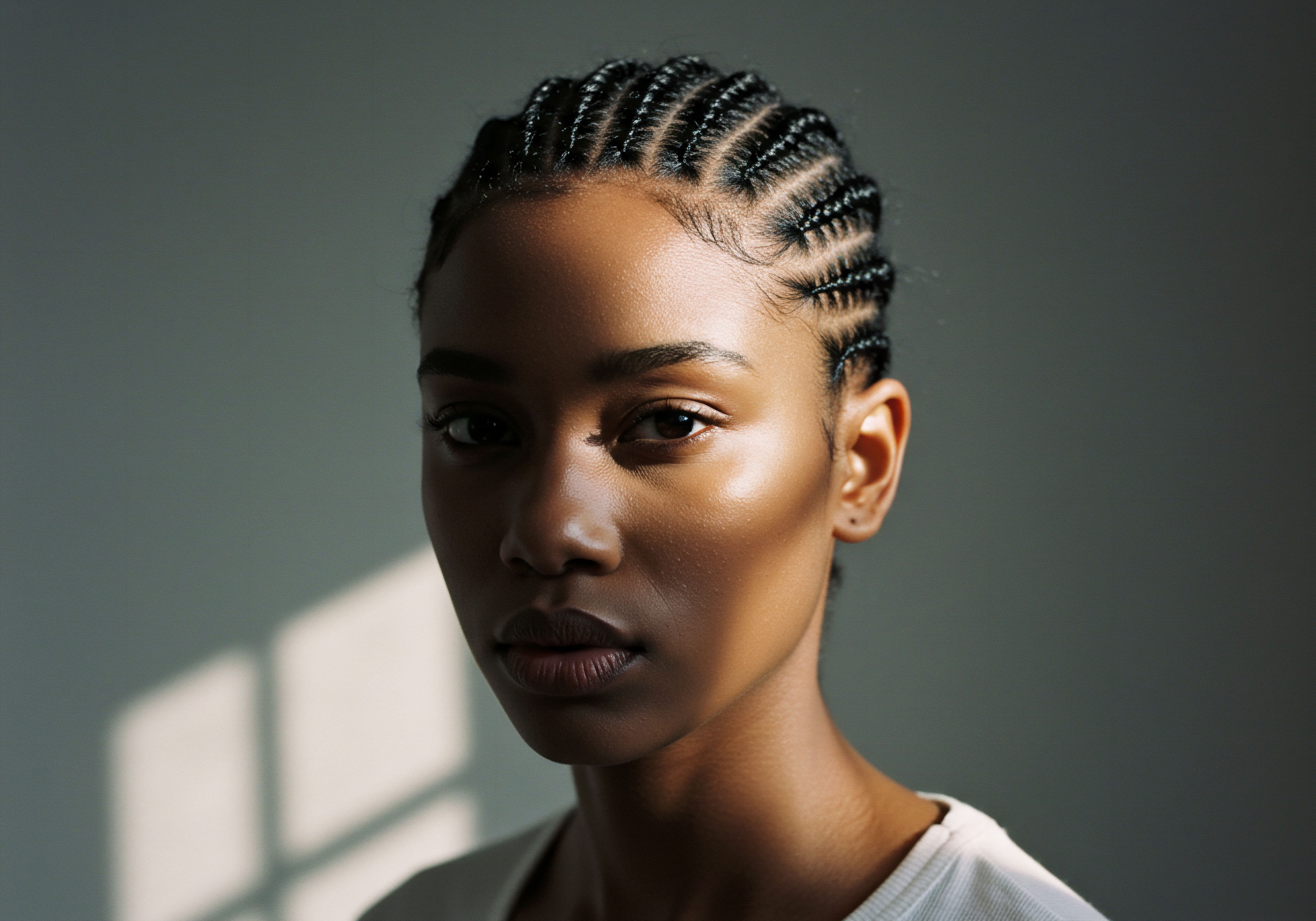
Relay
To truly grasp the implications of school hair restrictions on cultural rights, we must move beyond the surface and into the deeper currents where history, law, psychology, and social norms converge. This is a space of interconnectedness, where a policy about hair length can echo centuries of systemic bias, shaping a student’s self-perception and their very experience of belonging. Roothea seeks to illuminate these complexities, inviting a closer look at the ways institutional rules can, perhaps unintentionally, carry forward legacies of exclusion and how these rules might be reimagined to truly serve every young person.
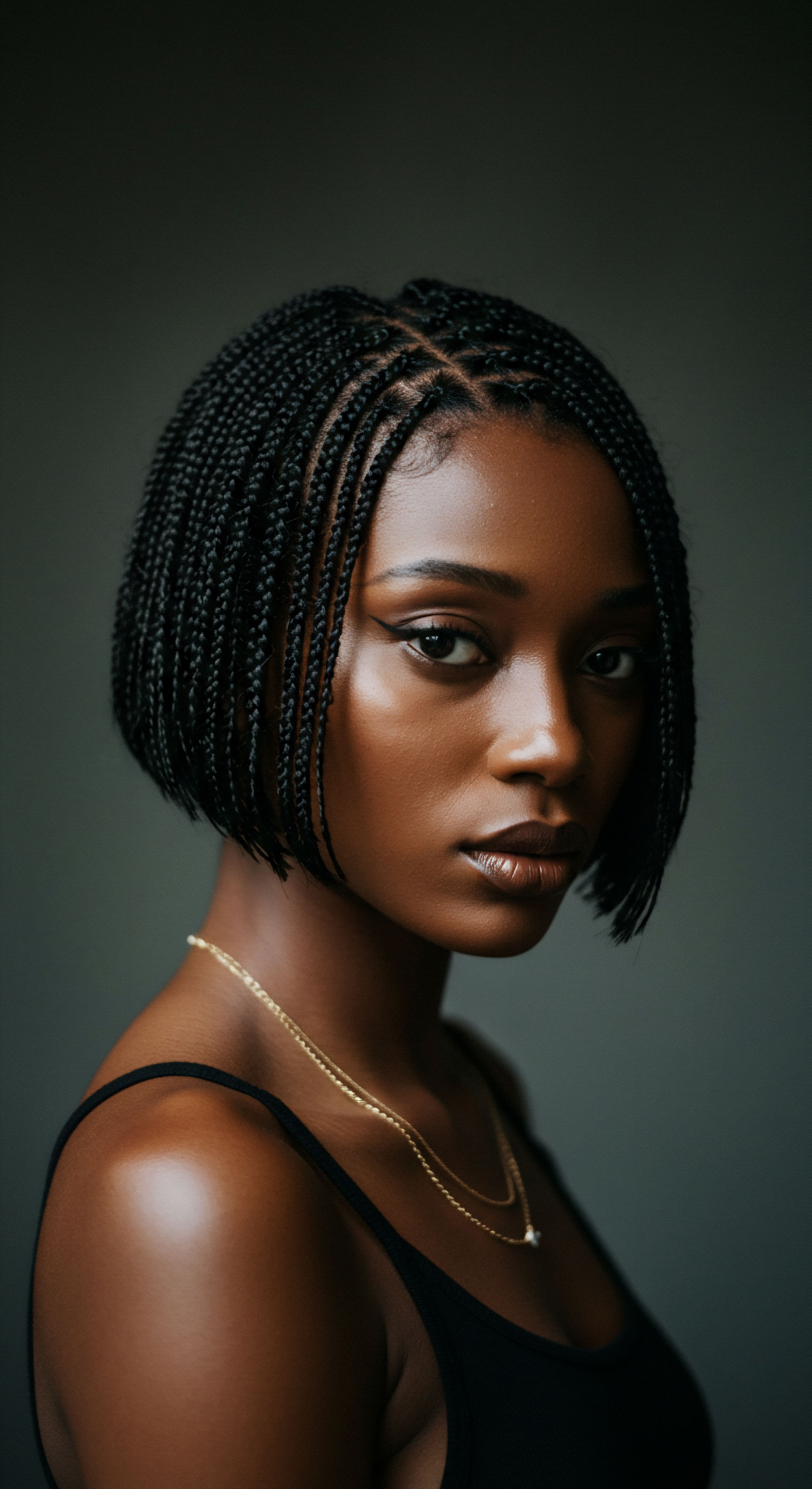
A Historical Echo in Hair Policies
The policing of Black hair in educational settings is not a modern anomaly; it is a continuation of historical efforts to control Black bodies and identities. During slavery, enslavers often shaved or cropped the hair of enslaved people as a form of punishment, recognizing the deep spiritual and cultural significance hair held in African societies. The 18th-century Tignon Laws in Louisiana, for instance, forced free Black women to cover their elaborately styled hair, aiming to diminish their social standing and attractiveness to white men. This historical trajectory demonstrates a consistent pattern ❉ when Black hair expressed autonomy, beauty, or cultural pride, it was often met with attempts at suppression.
The idea of “unprofessional” or “unkempt” hair, often applied to natural Black hairstyles like locs, braids, and Afros, directly stems from Eurocentric beauty standards that became dominant after the transatlantic slave trade. These standards implicitly or explicitly deem straight hair as the norm, positioning textured hair as something to be “managed” or “tamed.” Schools, as institutions often tasked with promoting conformity, have frequently adopted dress and grooming codes that, while seemingly neutral, disproportionately affect Black students.

The Legal Landscape of Hair Discrimination
The legal battle against hair discrimination has gained momentum with the advent of the CROWN Act (Creating a Respectful and Open World for Natural Hair). This legislation, first passed in California in 2019, aims to prohibit discrimination based on hair texture and protective hairstyles associated with race. As of September 2024, 27 states and Washington, D.C.
have enacted CROWN Act laws. Despite this progress, legal challenges persist, and the interpretation and enforcement of these laws remain critical.
School hair policies, seemingly benign, often perpetuate historical biases, undermining cultural identity and educational equity.
A prominent case highlighting this ongoing struggle is that of Darryl George, a Black high school student in Texas. George faced months of in-school suspension because his locs, which he wore neatly twisted, were deemed too long by the Barbers Hill Independent School District’s dress code for male students. This policy stipulated that male students’ hair could not extend below the eyebrows, earlobes, or the top of a T-shirt collar.
Even after the Texas CROWN Act went into effect in September 2023, a state judge ruled that the school’s policy did not violate the Act, arguing that the law prohibits discrimination based on texture or style, but not necessarily length. This ruling underscores a critical loophole in some state-level CROWN Acts, which may allow bans on hair length or color, thereby still targeting natural Black hairstyles.
The case of Darryl George illustrates the ongoing tension between local school autonomy and the spirit of anti-discrimination laws. His family has since filed a federal civil rights lawsuit, claiming emotional distress and a failure to enforce the state law. This legal contest highlights the need for comprehensive legislation that addresses all facets of hair, including length, texture, color, and style, to truly eliminate discriminatory practices.

How Do Hair Restrictions Affect Student Well-Being?
The impact of hair discrimination extends far beyond disciplinary actions; it deeply affects a student’s psychological well-being and academic journey. When students are forced to alter their natural hair or face suspension, it sends a clear message ❉ their authentic self is not acceptable. This can lead to significant mental health consequences.
Research from the Dove 2021 CROWN Study for Girls reveals startling statistics ❉ 53% of Black mothers reported their daughters experienced racial discrimination based on hairstyles as early as five years old. Furthermore, 66% of Black children in majority-white schools faced race-based hair discrimination. These experiences contribute to negative self-perception, anxiety, and even chronic stress in academic settings. The Association of Black Psychologists has termed hair discrimination “esthetic trauma,” noting its dire mental health effects.
The pressure to conform often leads to internalizing negative stereotypes, where natural hair is deemed “unprofessional” or “bad,” while straightened hair is considered “good.” This internal conflict can undermine a student’s self-esteem and sense of identity. Some students may resort to damaging styling practices, such as excessive heat or chemical treatments, to meet perceived standards, further compromising their hair health.
Beyond the individual, such policies create an unwelcoming and exclusionary environment. Black students, who constitute about 15% of the U.S. public school student population, account for a disproportionate 45% of all school suspensions related to hair dress code violations.
This disparity can lead to lower academic performance and increased absenteeism, potentially funneling students into the school-to-prison pipeline. The psychological toll is immense, impacting a student’s sense of belonging and their ability to focus on their education.

Cultural Rights and the Right to Self-Expression
Cultural rights encompass the right to participate in cultural life, to enjoy one’s own culture, and to express one’s identity through cultural practices. Hair, for many Black and mixed-race individuals, is an intrinsic part of their cultural heritage and personal identity. Historically, hairstyles have served as markers of tribal affiliation, social status, marital status, and even spiritual beliefs across various African societies. To restrict these styles is to restrict a fundamental form of cultural expression.
The argument that school dress codes are neutral and promote discipline often overlooks the inherent bias embedded within them. When policies are applied in a way that disproportionately targets one racial or ethnic group, they cease to be neutral and become discriminatory. The right to express one’s cultural identity through hair is not about defiance; it is about authenticity and dignity. When schools deny this right, they not only violate cultural principles but also undermine the very notion of an inclusive and equitable educational environment.
| Aspect of Impact Psychological Distress |
| Description Negative self-perception, anxiety, and internalized racism due to pressure to conform to Eurocentric beauty standards. |
| Relevant Statistics / Findings 53% of Black mothers report daughters experienced hair discrimination by age five. 81% of Black children in majority-white schools wish their hair was straight. |
| Aspect of Impact Academic Disruption |
| Description Increased disciplinary actions, suspensions, and absenteeism. |
| Relevant Statistics / Findings Black students account for 45% of hair-related dress code suspensions despite being 15% of the student population. |
| Aspect of Impact Cultural Disconnection |
| Description Feeling forced to abandon styles that connect them to their heritage, leading to a diminished sense of belonging. |
| Relevant Statistics / Findings Hair is a "living archive of identity, culture, and resilience" for Black heritage communities. |
| Aspect of Impact Physical Hair Damage |
| Description Pressure to chemically straighten or use excessive heat to avoid discrimination. |
| Relevant Statistics / Findings Black women often feel pressure to chemically straighten hair to avoid discrimination. |
| Aspect of Impact Data suggests a clear and detrimental impact of hair discrimination on Black students' well-being and educational experiences. |
The debate around hair restrictions in schools is a microcosm of larger societal conversations about diversity, equity, and inclusion. It calls upon institutions to critically examine their policies, to recognize the historical and cultural significance of natural hair, and to uphold the fundamental right of every student to express their identity without fear of prejudice or penalty. The goal is to create learning environments where every student feels seen, respected, and empowered to bring their whole self to the classroom.

Reflection
As we close this exploration, a gentle understanding settles upon us ❉ the strands that crown our heads are rarely just hair. They are vessels of memory, expressions of spirit, and silent declarations of belonging. The conversation surrounding natural hair restrictions in schools, then, becomes a poignant mirror reflecting broader societal attitudes towards difference and authenticity.
It asks us to consider not merely what rules are written, but what messages are truly conveyed—messages that shape a young person’s sense of worth, their connection to heritage, and their courage to stand in their truth. Roothea believes that true education flourishes when every individual is free to embody their unique beauty, unburdened by narrow perceptions, allowing the vibrant diversity of human experience to shine.

References
- Byrd, Ayana, and Tharps, Lori. Hair Story ❉ Untangling the Roots of Black Hair in America. St. Martin’s Griffin, 2001.
- Dabiri, Emma. Twisted ❉ The Tangled History of Black Hair Culture. Harper Perennial, 2020.
- Rooks, Noliwe M. Hair Raising ❉ Beauty, Culture, and African American Women. Rutgers University Press, 1996.
- Cherry, Matthew A. Hair Love. Kokila, 2019.
- Maharaj, Claudette. “Beyond the roots ❉ exploring the link between black hair and mental health.” TRIYBE, 2025.
- Kempf, Chloe, et al. “Dressed to Express ❉ How Dress Codes Discriminate Against Texas Students and Must Be Changed.” ACLU of Texas, 2024.
- Oladele, Deborah B. Markiewicz, Ewa, and Idowu, Olusola C. “The Genomic Variation in Textured Hair ❉ Implications in Developing a Holistic Hair Care Routine.” Cosmetics, vol. 11, no. 6, 2024, p. 183.
- DeMitchell, Todd A. The Legal and Policy Challenges of Student Dress and Grooming Codes ❉ Balancing Rights and Responsibilities. Rowman & Littlefield, 2024.
- Dove CROWN Research Study. “2021 CROWN Research Study for Girls.” The CROWN Act, 2021.
- Dove and LinkedIn. “2023 CROWN Workplace Research Study.” The CROWN Act, 2023.
- Byrd, Ayana, and Tharps, Lori. “Tangled Roots ❉ Decoding the History of Black Hair.” CBC Radio, 2021.